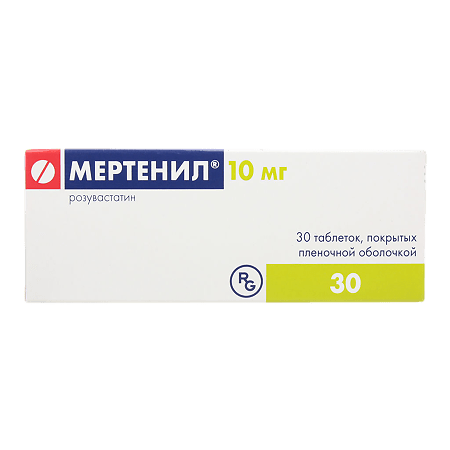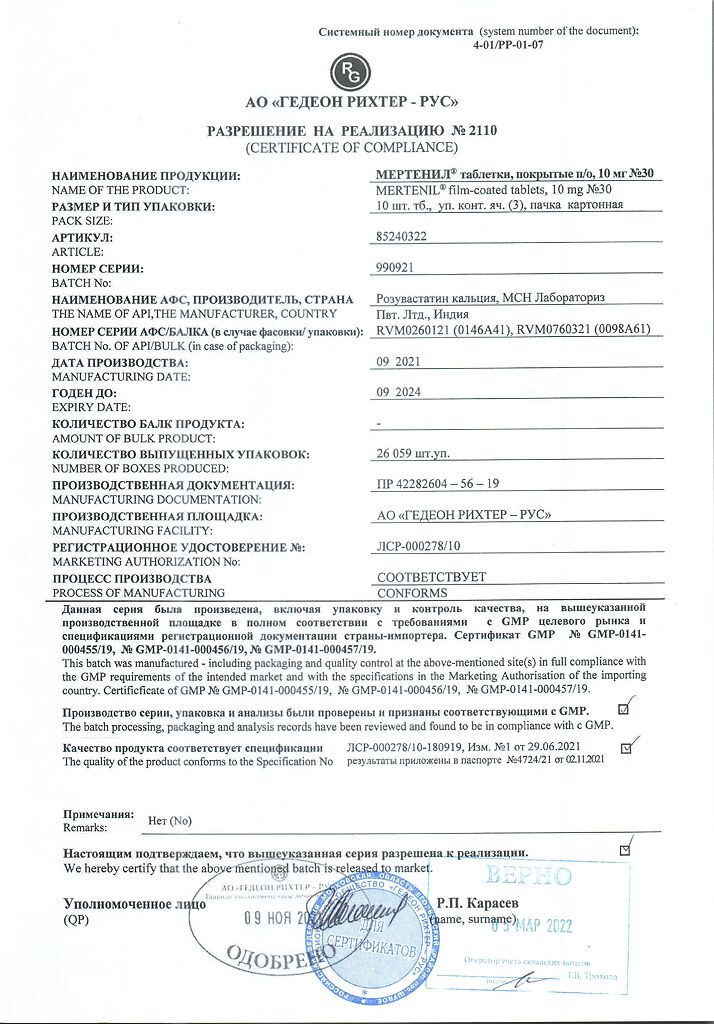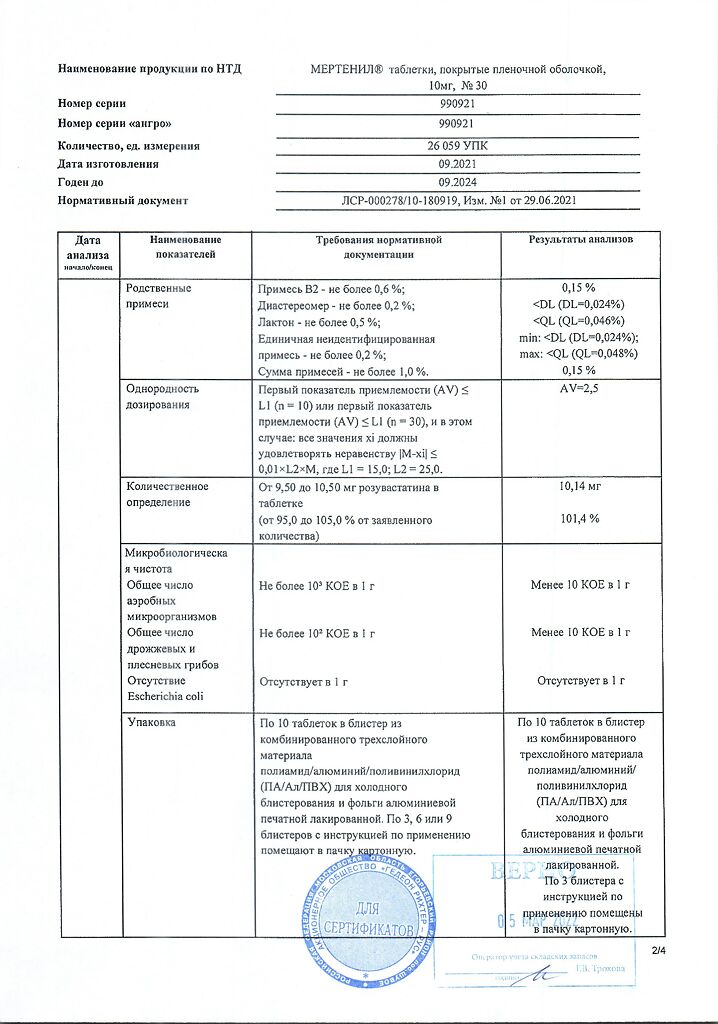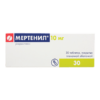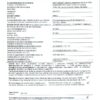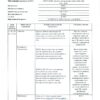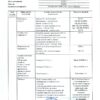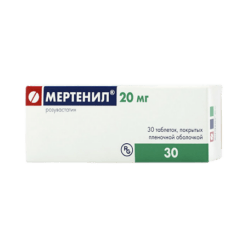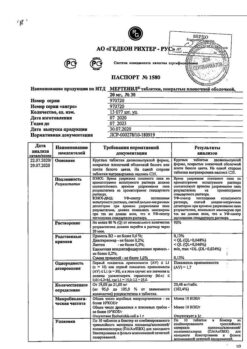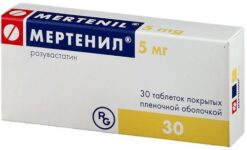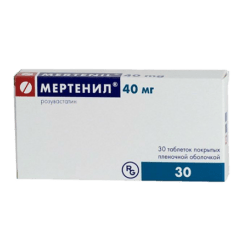No products in the cart.
Mertenil, 10 mg 30 pcs.
€23.43 €19.52
Description
Mertenil is hypolipidemic.
Pharmacodynamics
Rosuvastatin is a selective and competitive inhibitor of HMG-CoA reductase – the enzyme that converts HMG-CoA to mevalonate, which is a precursor of cholesterol (CH). The main target of rosuvastatin action is the liver, where the synthesis of cholesterol and LDL catabolism take place.
Rosuvastatin increases the number of hepatic LDL receptors on the surface of cells, increasing the capture and catabolism of LDL.
It also inhibits the synthesis of LDL-C in liver cells, thereby reducing total LDL and LDL-C.
Rosuvastatin reduces elevated LDL, total cholesterol and triglycerides (TG), increases HDL, and decreases apolipoprotein B (apoB), non-HDL cholesterol (total cholesterol minus HDL cholesterol), LDL-C, TG-LDL and increases apolipoprotein A-I (apoA-I). Rosuvastatin decreases the ratio of LDL cholesterol/LDL cholesterol, total cholesterol/LDL cholesterol, non-LDL cholesterol/LDL cholesterol and apoB/apoA-I.
Therapeutic effect can be achieved within 1 week after the start of treatment, after 2 weeks 90% of the maximum possible effect is achieved. Usually the maximum possible therapeutic effect is achieved after 4 weeks and is maintained with continued use of the drug.
Clinical efficacy
Rosuvastatin is effective in treating adult patients with hypercholesterolemia with or without symptoms of hypertriglyceridemia regardless of their race, sex or age as well as in treating a special category of patients, patients with diabetes or hereditary form of familial hypercholesterolemia.
Rosuvastatin is effective in treating patients with Fredrickson type IIa and IIb hypercholesterolemia (mean baseline LDL-C levels of about 4.8 mmol/L). In 80% of patients who received 10 mg of rosuvastatin the target values of LDL cholesterol levels established by the European Society for the Study of Atherosclerosis (less than 3 mmol/l) were achieved.
In patients with heterozygous familial hypercholesterolemia who received rosuvastatin in doses from 20 to 80 mg according to the scheme of forced dose titration, all doses taken had a significant impact on changes in parameters characterizing lipid content and on achieving the goal of therapy. As a result of titrating doses up to 40 mg/day (12 weeks of therapy), LDL cholesterol content decreased by 53%. In 33% of patients, LDL cholesterol values corresponding to the target norms (below 3 mmol/l) of the European Society for Atherosclerosis Research guidelines were achieved.
In patients with homozygous familial hypercholesterolemia who took rosuvastatin in doses of 20 and 40 mg, the mean reduction in LDL-C was 22%. In patients with hypertriglyceridemia with an initial TG concentration of 273 to 817 mg/dL who received rosuvastatin in doses of 5 to 40 mg/d for 6 weeks, plasma TG concentrations decreased significantly.
Additive effect is noted in combination with fenofibrate for TG content and nicotinic acid (more than 1 g/day) for HDL-C content.
The studies on the effect of rosuvastatin on the reduction of complications caused by lipid disorders such as coronary artery disease have not yet been completed.
. In patients with a low risk of CHD (defined as a Framingham risk of less than 10% over a period of more than 10 years), with a median LDL-C of 4 mmol/L (154,5 mg/dL) rosuvastatin at a dose of 40 mg/day significantly slowed the increase in the maximum value characterizing carotid wall thickening in 12 segments compared with placebo at a rate of -0.0145 mm/yr (95% confidence interval – CI – -0.0196 to -0.0093, with p
Pharmacokinetics
Absorption
Tmax is 5 h after oral administration of the appropriate dose. Absolute bioavailability is approximately 20%.
Distribution
Rosuvastatin is absorbed primarily by the liver, which is the main site of HC synthesis and metabolism of LDL cholesterol. Vd of rosuvastatin is approximately 134 liters. 90% of rosuvastatin is bound to plasma proteins, mainly to albumin.
Metabolism
It is subject to limited metabolism (approximately 10%). Rosuvastatin is a rather non-core substrate for metabolism by enzymes of cytochrome P450 system. CYP2C9 is the main isoenzyme involved in metabolism, while CYP2C19, CYP3A4 and CYP2D6 isoenzymes are less involved in metabolism. The main metabolite is N-desmethyl, which is 50% less active than rosuvastatin. Lactone metabolites are pharmacologically inactive. More than 90% of the pharmacological activity on inhibition of circulating HMG-CoA reductase is provided by rosuvastatin, the rest by its metabolites.
Elimination
Approximately 90% of the administered dose of rosuvastatin is excreted unchanged from the body through the intestine (including absorbed and unabsorbed rosuvastatin) and the remainder through the kidneys. T1/2 is 19 h, does not change with increasing drug dose. Mean geometric plasma clearance is approximately 50 L/h (coefficient of variation 21.7%). As in the case of other HMG-CoA reductase inhibitors, hepatic uptake of rosuvastatin involves membrane transporter of CHC across membranes – transport protein with organic anions. This transporter plays a major role in the excretion of rosuvastatin by the liver.
Linearity
The systemic exposure of rosuvastatin increases in proportion to the dose. No changes in pharmacokinetic parameters are observed when taking the drug several times a day.
Age and sex
There is no clinically significant effect on pharmacokinetic parameters of rosuvastatin.
Ethnic groups
Comparative pharmacokinetic studies showed a two-fold increase in mean AUC and Tmax values in patients of Asian origin (Japanese, Chinese, Filipino, Vietnamese and Koreans) compared to those of Caucasian race. Indians had about 1.3-fold higher mean AUC and Cmax values. At the same time, analysis of pharmacokinetic parameters for the entire study population showed no clinically significant differences in pharmacokinetics of the drug among Caucasoid, Negroid, and Hispanic races.
Renal failure
In patients with mild to moderate renal failure plasma concentrations of rosuvastatin or N-desmethyl metabolite do not change significantly. In patients with severe renal failure (creatinine Cl less than 30 ml/min) plasma concentration of rosuvastatin is 3 times higher, and concentration of N-desmethyl-metabolite is 9 times higher compared to healthy volunteers. Plasma concentrations of rosuvastatin were approximately 50% higher in patients on hemodialysis than in healthy volunteers.
Hepatic failure
Patients with varying degrees of hepatic failure with a Child-Pugh score of 7 or lower showed no increase in T1/2 rosuvastatin. However, 2 patients with Child-Pugh scores of 8 and 9 showed prolongation of T1/2, approximately 2 times greater than for patients with lower Child-Pugh scores. There is no experience with rosuvastatin in patients with a Child-Pugh score above 9.
Indications
Indications
hypercholesterolemia and combined (mixed) dyslipidemic conditions to reduce elevated concentrations of total cholesterol, LDL cholesterol, ApoB and TG in the blood serum as an addition to diet therapy when diet and other non-drug methods (for example, exercise, weight loss) are insufficient;
familial homozygous hypercholesterolemia as an adjunct to diet therapy and other methods of lipid-lowering therapy (for example, LDL apheresis) or in cases where such therapy is not effective enough;
hypertriglyceridemia (Fredrickson type IV) as an adjunct to diet;
to slow the progression of atherosclerosis as an addition to diet in patients who are indicated for therapy to reduce the concentration of total cholesterol and LDL cholesterol;
primary prevention of major cardiovascular complications (cardiovascular death, stroke, heart attack, unstable angina and arterial revascularization) in adult patients without clinical signs of coronary heart disease, but with an increased risk of its development (age over 50 years for men and 60 years for women, increased concentration of C-reactive protein – ≥2 mg/l – in the presence of at least one of the additional risk factors, such as arterial hypertension, low HDL cholesterol, smoking, family history of early onset coronary heart disease).
Pharmacological effect
Pharmacological effect
Mertenil – hypolipidemic.
Pharmacodynamics
Rosuvastatin is a selective and competitive inhibitor of HMG-CoA reductase, an enzyme that converts HMG-CoA into mevalonate, which is a precursor of cholesterol (C). The main target of action of rosuvastatin is the liver, where cholesterol synthesis and LDL catabolism occur.
Rosuvastatin increases the number of hepatic LDL receptors on the cell surface, increasing the uptake and catabolism of LDL.
It also inhibits the synthesis of VLDL cholesterol in liver cells, thereby reducing the total content of LDL and VLDL.
Rosuvastatin reduces the increased content of LDL cholesterol, total cholesterol and triglycerides (TG), increases the content of HDL cholesterol, and also reduces the content of apolipoprotein B (ApoB), non-HDL cholesterol (total cholesterol content minus HDL cholesterol content), VLDL cholesterol, VLDL TG and increases the level of apolipoprotein A-I (ApoA-I). Rosuvastatin reduces the ratio of LDL cholesterol/HDL cholesterol, total cholesterol/HDL cholesterol, non-HDL cholesterol/HDL cholesterol and ApoB/ApoA-I.
The therapeutic effect can be achieved within 1 week after the start of treatment; after 2 weeks, 90% of the maximum possible effect is not achieved. Typically, the maximum possible therapeutic effect is achieved after 4 weeks and is maintained with further use of the drug.
Clinical effectiveness
Rosuvastatin is effective in the treatment of adult patients with hypercholesterolemia with or without symptoms of hypertriglyceridemia, regardless of their race, gender or age, as well as in the treatment of a special category of patients, patients with diabetes mellitus or a hereditary form of familial hypercholesterolemia.
Rosuvastatin is effective for the treatment of patients with Fredrickson type IIa and IIb hypercholesterolemia (average initial LDL cholesterol level of about 4.8 mmol/l). In 80% of patients receiving 10 mg of rosuvastatin, the target LDL cholesterol levels established by the European Society for Research on Atherosclerosis (less than 3 mmol/l) were achieved.
In patients with heterozygous familial hypercholesterolemia who took rosuvastatin in doses from 20 to 80 mg according to a forced dose titration scheme, all doses taken had a significant effect on changes in parameters characterizing lipid content and on achieving the goals of therapy. As a result of dose titration to 40 mg/day (12 weeks of therapy), LDL cholesterol levels decreased by 53%. In 33% of patients, LDL cholesterol values corresponding to the target norms (below 3 mmol/l) of the European Society for Research on Atherosclerosis guidelines were achieved.
In patients with homozygous familial hypercholesterolemia who took rosuvastatin in doses of 20 and 40 mg, the average reduction in LDL cholesterol was 22%. In patients with hypertriglyceridemia with an initial TG concentration of 273 to 817 mg/dL who received rosuvastatin at a dose of 5 to 40 mg/day for 6 weeks, the concentration of TG in the blood plasma significantly decreased.
An additive effect is observed in combination with fenofibrate in terms of TG content and nicotinic acid (more than 1 g/day) in terms of HDL cholesterol content.
Studies on the effect of rosuvastatin on reducing the number of complications caused by lipid disorders, such as coronary artery disease, have not yet been completed.
In patients at low risk for coronary artery disease (defined as a Framingham risk of less than 10% over a period of more than 10 years), with an average LDL cholesterol level of 4 mmol/l (154.5 mg/dl), rosuvastatin at a dose of 40 mg/day significantly slowed the increase in the maximum value characterizing the thickening of the carotid artery wall in 12 segments, compared with placebo at a rate of −0.0145 mm/year (95% confidence interval – CI – from −0.0196 to −0.0093, at p
Pharmacokinetics
Absorption
Tmax – 5 hours after oral administration of the appropriate dose. Absolute bioavailability is approximately 20%.
Distribution
Rosuvastatin is absorbed primarily by the liver, which is the main site of cholesterol synthesis and LDL cholesterol metabolism. Vd of rosuvastatin is approximately 134 l. 90% of rosuvastatin is bound to plasma proteins, mainly albumin.
Metabolism
Subject to limited metabolism (approximately 10%). Rosuvastatin is a fairly non-core substrate for metabolism by enzymes of the cytochrome P450 system. CYP2C9 is the main isoenzyme involved in metabolism, while the isoenzymes CYP2C19, CYP3A4 and CYP2D6 are involved in metabolism to a lesser extent. The main metabolite is N-desmethyl, which is 50% less active than rosuvastatin. Lactone metabolites are pharmacologically inactive. More than 90% of the pharmacological activity of inhibiting circulating HMG-CoA reductase is provided by rosuvastatin, the rest is provided by its metabolites.
Removal
Approximately 90% of the administered dose of rosuvastatin is excreted unchanged from the body through the intestines (including absorbed and unabsorbed rosuvastatin), and the remaining part is excreted by the kidneys. T1/2 is 19 hours, does not change with increasing dose of the drug. The geometric mean plasma clearance is approximately 50 L/h (coefficient of variation 21.7%). As is the case with other HMG-CoA reductase inhibitors, the process of hepatic uptake of rosuvastatin involves a membrane transporter of cholesterol across membranes, a transport protein from organic anions. This transporter plays an important role in the elimination of rosuvastatin by the liver.
Linearity
Systemic exposure of rosuvastatin increases in proportion to the dose. There are no changes in pharmacokinetic parameters when taking the drug several times a day.
Age and gender
They do not have a clinically significant effect on the pharmacokinetic parameters of rosuvastatin.
Ethnic groups
Comparative pharmacokinetic studies showed a two-fold increase in the mean AUC and Tmax in patients of Asian origin (Japanese, Chinese, Filipinos, Vietnamese and Koreans) compared with values in Caucasians. In Indians, approximately 1.3 times the mean AUC and Cmax were observed. At the same time, an analysis of pharmacokinetics indicators for the entire study population did not reveal clinically significant differences in the pharmacokinetics of the drug among representatives of the Caucasian, Negroid races, and Latin Americans.
Kidney failure
In patients with mild to moderate renal failure, plasma concentrations of rosuvastatin or N-desmethyl metabolite do not change significantly. In patients with severe renal failure (Cl creatinine less than 30 ml/min), the concentration of rosuvastatin in the blood plasma is 3 times higher, and the concentration of N-desmethyl metabolite is 9 times higher compared to healthy volunteers. Plasma concentrations of rosuvastatin in hemodialysis patients were approximately 50% higher than in healthy volunteers.
Liver failure
In patients with varying degrees of liver failure with a score of 7 and below on the Child-Pugh scale, no increase in T1/2 of rosuvastatin was detected. However, 2 patients with Child-Pugh scores of 8 and 9 had a T1/2 prolongation that was approximately 2 times greater than that of patients with lower Child-Pugh scores. There is no experience with the use of rosuvastatin in patients with a score above 9 on the Child-Pugh scale.
Special instructions
Special instructions
Application in pediatric practice. The effectiveness and safety of the drug in children under 18 years of age have not been established. Experience with the drug in pediatric practice is limited to a small number of children (8 years of age and older) with familial homozygous hypercholesterolemia. Currently, Mertenil® is not recommended for use in children under 18 years of age.
Renal effects. Proteinuria, predominantly of tubular origin, was observed in patients taking high doses of Mertenil®, especially 40 mg, but in most cases it was intermittent or short-term. It has been shown that such proteinuria does not indicate the onset of acute or progression of existing kidney disease. The incidence of serious renal dysfunction increases with 40 mg rosuvastatin. It is recommended to monitor renal function indicators during therapy with Mertenil®.
Musculoskeletal system. When using the drug Mertenil® in all dosages, and especially when taking the drug in a dose exceeding 20 mg, myalgia, myopathy and, in rare cases, rhabdomyolysis were detected. Rhabdomyolysis has occurred very rarely with concomitant use of ezetimibe and HMG-CoA reductase inhibitors. In this case, pharmacological interaction between the drugs cannot be excluded, so Mertenil® and ezetimibe should be used together with caution (see “Interaction”). The incidence of rhabdomyolysis increases when taking 40 mg of rosuvastatin.
Determination of CPK. Determination of CPK activity should not be carried out after intense physical activity that causes an increase in CPK, as this may complicate the interpretation of the results. If CPK activity increases before therapy to more than 5 times the ULN, a repeat measurement should be taken after 5–7 days. If repeated measurement confirms the initial CPK value (5 times higher than ULN), therapy with Mertenil® should not be started.
Before starting therapy. The drug Mertenil®, like other HMG-CoA reductase inhibitors, should be prescribed with extreme caution to patients with existing risk factors for myopathy/rhabdomyolysis. These factors include:
– renal failure;
– hypothyroidism (for a dose of 40 mg, see “Contraindications”);
– own or family history of muscle diseases (for a dose of 40 mg, see “Contraindications”);
– a history of myotoxicity while taking other HMG-CoA reductase inhibitors or fibrates (for a dose of 40 mg, see “Contraindications”);
– alcohol abuse (for a dose of 40 mg, see “Contraindications”);
– age over 65 years;
– conditions accompanied by an increase in the concentration of the drug in the blood plasma (see “Interaction”, for a dose of 40 mg see “Contraindications”);
– simultaneous use of fibrates (for a dose of 40 mg, see “Contraindications”).
In such patients, the balance of risk and possible benefit of therapy should be assessed and clinical monitoring should be carried out throughout the entire course of therapy.
During therapy. It is recommended that patients be informed to immediately notify their physician if they experience unexpected muscle pain, muscle weakness, or cramps, especially when accompanied by malaise or fever.
In such patients, it is imperative to monitor CPK activity. Treatment should be discontinued if CPK activity is more than 5 times the ULN or muscle symptoms are severe and cause daily discomfort throughout the day (even if CPK activity is 5 times less than the ULN). If symptoms disappear and CPK activity returns to normal, re-prescribing Mertenil® or prescribing an alternative HMG-CoA reductase inhibitor in lower doses should be considered with careful monitoring of the patient. Regular monitoring of CK activity in patients in the absence of symptoms of rhabdomyolysis is impractical.
However, an increase in the incidence of myositis and myopathy was detected in patients taking other HMG-CoA reductase inhibitors together with fibric acid derivatives, including gemfibrozil, cyclosporine, nicotinic acid in lipid-lowering doses, antifungals, protease inhibitors and macrolide antibiotics. Gemfibrozil increases the risk of myopathy when combined with certain HMG-CoA reductase inhibitors. Therefore, simultaneous use of rosuvastatin and gemfibrozil is not recommended. The risk/benefit ratio should be carefully assessed when co-administering rosuvastatin with fibrates or nicotinic acid in lipid-lowering doses (more than 1 g). Concomitant use of rosuvastatin at a dose of 40 mg and fibrates is contraindicated (see “Interaction” and “Side effects”).
Mertenil® should not be prescribed to patients with acute, severe illness suggestive of myopathy, or with the possible development of secondary renal failure (for example, sepsis, hypertension, surgery, trauma, metabolic syndrome, seizures, endocrine disorders, electrolyte disturbances – see Precautions).
Liver. Like other HMG-CoA reductase inhibitors, Mertenil® should be prescribed with extreme caution to patients who abuse alcohol or have a history of liver disease. It is recommended to determine liver function indicators before and 3 months after the start of treatment. If the activity of hepatic transaminases in the blood serum is 3 times higher than the ULN, you should stop taking the drug or reduce the dose taken (see “Dosage and Administration”). The incidence of serious liver dysfunction (associated mainly with increased activity of liver transaminases) increases when taking 40 mg of the drug.
Secondary hypercholesterolemia. In patients with secondary hypercholesterolemia due to hypothyroidism, nephrotic syndrome, therapy for the underlying disease should be carried out before starting treatment with Mertenil®.
Special populations, ethnic groups. Pharmacokinetic studies revealed an increase in systemic concentrations of rosuvastatin among patients of Asian origin compared to data obtained among Caucasian patients (see “Dosage and Administration” and “Pharmacokinetics”).
Protease inhibitors. Concomitant use of rosuvastatin with protease inhibitors is not recommended (see “Interaction”).
Lactose. The drug should not be used in patients with lactase deficiency, galactose intolerance and glucose-galactose malabsorption.
Effect on the ability to drive vehicles and operate equipment. Studies have not been conducted to study the effect of the drug Mertenil® on the ability to drive a vehicle and use equipment. However, based on the pharmacodynamic properties of the drug, it can be assumed that Mertenil® should not have such an effect. However, when driving a vehicle or other machinery, it is necessary to take into account that dizziness may occur during treatment.
Active ingredient
Active ingredient
Rosuvastatin
Composition
Composition
Active ingredient:
rosuvastatin calcium;
Excipients:
MCC 12 – 21.55/43.1/86.2/172.4 mg;
lactose monohydrate – 43.5/87/174/348 mg;
magnesium hydroxide – 3.75/7.5/15/30 mg;
crospovidone (type A) – 0.25/0.5/1/2 mg;
magnesium stearate – 0.75/1.5/3/6 mg;
Film casing:
Opadry II white (talc – 0.444/0.74/1.48/2.96 mg, macrogol 3350 – 0.606/1.01/2.02/4.04 mg, titanium dioxide (E171) – 0.75/1.25/2.5/5 mg,
polyvinyl alcohol 1.2/2/4/8 mg) – 3/5/10/20 mg;
Pregnancy
Pregnancy
The drug Mertenil® is contraindicated for use during pregnancy and lactation.
Women of childbearing age should use reliable and adequate contraception.
Since cholesterol and cholesterol biosynthesis products are of great importance for fetal development, the potential risk of inhibiting HMG-CoA reductase outweighs the benefit of its use during pregnancy.
If pregnancy occurs, the drug should be stopped immediately. There are no data on the excretion of rosuvastatin in breast milk. If it is necessary to prescribe the drug during lactation, breastfeeding should be stopped.
Contraindications
Contraindications
hypersensitivity to rosuvastatin or any of the components of the drug;
liver diseases in the active phase, including a persistent increase in the activity of liver transaminases, as well as any increase in the activity of transaminases in the blood serum by more than 3 times compared with ULN;
severe renal dysfunction (creatinine Cl less than 30 ml/min);
myopathy;
simultaneous use of cyclosporine;
patients predisposed to the development of myotoxic complications;
patients with liver failure with a score above 9 on the Child-Pugh scale;
lactose intolerance, lactase deficiency or glucose-galactose malabsorption;
pregnancy;
lactation period;
women of childbearing age who do not use reliable contraception;
age under 18 years (efficacy and safety have not been established).
Side Effects
Side Effects
From the immune system: rarely – hypersensitivity reactions, including angioedema.
From the endocrine system: often – diabetes mellitus type 2.
From the side of the central nervous system: often – headache, dizziness.
From the digestive system: often – constipation, abdominal pain, nausea; rarely – pancreatitis.
From the skin and subcutaneous fat: infrequently – itching, rash, urticaria.
From the musculoskeletal system and connective tissue: often – myalgia; rarely – myopathy (including myositis), rhabdomyolysis.
Other: often – asthenic syndrome.
As with other HMG-CoA reductase inhibitors, the incidence of side effects is dose-dependent.
The incidence of rhabdomyolysis and severe side effects from the kidneys and liver increases in patients taking rosuvastatin at a dose of 40 mg.
From the kidneys and urinary tract: when taking rosuvastatin, proteinuria was observed, mainly of tubular origin. Changes in urinary protein (from absent or trace amounts to ++ or higher) were found in less than 1% of patients taking 10 and 20 mg rosuvastatin, and in approximately 3% of patients taking the drug at a dose of 40 mg.
A minimal change in the amount of protein in the urine, expressed as a change from zero or trace levels to a + level, was observed when taking the drug at a dose of 20 mg. In most cases, proteinuria decreased and resolved spontaneously during treatment. Analysis of clinical trial data did not reveal a causal relationship between proteinuria and acute or progressive kidney disease.
Haematuria has been observed in a number of patients treated with rosuvastatin, but data from clinical studies have shown that the incidence of such cases is very low.
Musculoskeletal: Effects on skeletal muscles causing myalgia, myopathy (including myositis) and in rare cases rhabdomyolysis with or without acute renal failure have been observed in patients taking any dose of rosuvastatin, especially doses above 20 mg. An increase in CPK activity, depending on the dose taken, was detected in patients taking rosuvastatin, but in most cases these manifestations were minor, asymptomatic and temporary. If CPK activity is 5 times higher than ULN, then treatment should be stopped (see “Special Instructions”).
From the liver: as with other HMG-CoA reductase inhibitors, an increase in the activity of hepatic transaminases, depending on the dose taken, was detected in a small number of patients taking rosuvastatin. However, in most cases this increase was moderate, asymptomatic and transient.
Laboratory indicators: increased concentrations of glucose, bilirubin, GGTP activity, alkaline phosphatase, thyroid dysfunction.
Post-marketing use
From the digestive system: very rarely – jaundice, hepatitis; rarely – increased activity of liver transaminases; unspecified frequency – diarrhea.
From the musculoskeletal system: very rarely – arthralgia.
From the side of the central nervous system: very rarely – polyneuropathy, memory loss.
From the respiratory system: unspecified frequency – cough, shortness of breath.
From the kidneys and urinary tract: very rarely – hematuria.
From the skin and subcutaneous fat: frequency unspecified – Stevens-Johnson syndrome
Other: unspecified frequency – peripheral edema.
The following side effects have been reported with some statins: depression, sleep disturbances including insomnia and nightmares, and sexual dysfunction. Isolated cases of interstitial lung disease have been reported, especially with long-term use of the drugs.
Interaction
Interaction
Cyclosporine – with simultaneous administration of rosuvastatin and cyclosporine, the AUC of rosuvastatin increased 7 times compared to the values obtained in healthy volunteers (see “Contraindications”). Combined use leads to an 11-fold increase in the concentration of rosuvastatin in blood plasma. When taking the drugs simultaneously, no change in the concentration of cyclosporine in the blood plasma was detected.
Vitamin K antagonists – As with other HMG-CoA reductase inhibitors, initiating rosuvastatin therapy or increasing the dose of the drug in patients receiving concomitant vitamin K antagonists (for example, warfarin or other coumarin anticoagulants) may lead to an increase in INR. Discontinuation or reduction of the dose of rosuvastatin may cause a decrease in MHO. In such cases, MHO monitoring should be performed.
Ezetimibe – when rosuvastatin and ezetimibe are taken concomitantly, there is no change in the AUC or Cmax of both drugs. However, a pharmacodynamic interaction between rosuvastatin and ezetimibe, which can cause adverse events, cannot be excluded.
Gemfibrozil and other lipid-lowering drugs – simultaneous use of rosuvastatin and gemfibrozil leads to a 2-fold increase in the Cmax and AUC of rosuvastatin (see “Special Instructions”).
Based on data from specific interaction studies, no relevant pharmacokinetic interaction with fenofibrates is expected, but pharmacodynamic interactions are possible. Gemfibrozil, fenofibrate, other fibrates and nicotinic acid in lipid-lowering doses (1 g or more per day) when taken concomitantly with HMG-CoA reductase inhibitors increased the risk of myopathy, possibly due to the fact that they can cause myopathy when taken alone. The simultaneous use of 40 mg of rosuvastatin and fibrates is contraindicated (see “Special instructions” and “Contraindications”). When taken concomitantly with gemfibrozil and other lipid-lowering drugs, the initial dose of Mertenil® should not exceed 5 mg.
Protease inhibitors – although the exact mechanism of interaction is unknown, concomitant use of rosuvastatin with protease inhibitors may lead to a prolongation of T1/2 of rosuvastatin. In a pharmacokinetic study, when healthy volunteers co-administered 20 mg of rosuvastatin and a combination drug containing two protease inhibitors (400 mg lopinavir/100 mg ritonavir), a 2-fold increase in AUC0-24 and a 5-fold increase in Cmax of rosuvastatin was detected, respectively. Therefore, it is not recommended to simultaneously prescribe rosuvastatin and protease inhibitors when treating patients with HIV.
Antacids – simultaneous administration of rosuvastatin and antacids in suspension containing aluminum or magnesium hydroxide can lead to a decrease in the concentration of rosuvastatin in the blood plasma by approximately 50%. This effect is less pronounced if antacids are used 2 hours after taking rosuvastatin. The clinical significance of this interaction has not been studied.
Erythromycin – simultaneous use of rosuvastatin and erythromycin can lead to a decrease in AUC0-t of rosuvastatin by 20% and Cmax of rosuvastatin by 30%. This relationship may be due to increased intestinal motility caused by erythromycin.
Oral contraceptives/hormone replacement therapy – Concomitant use of rosuvastatin and oral contraceptives may increase the AUC of ethinyl estradiol and norgestrel by 26 and 34%, respectively. This increase in plasma concentrations should be taken into account when choosing the dose of oral contraceptives. There are no pharmacokinetic data on the simultaneous use of rosuvastatin and hormone replacement therapy drugs, so a similar effect cannot be excluded when using this combination. However, this combination of drugs was used quite widely by women during clinical trials and was well tolerated.
Other drugs – no clinically significant interaction is expected when taking rosuvastatin and digoxin simultaneously.
Cytochrome P450 isoenzymes – the results of in vitro and in vivo studies have shown that rosuvastatin is neither an inhibitor nor an inducer of cytochrome P450 isoenzymes. In addition, rosuvastatin is a fairly weak substrate for these enzymes. There was no clinically significant interaction between rosuvastatin and fluconazole (an inhibitor of the CYP2C9 and CYP3A4 isoenzymes) or ketoconazole (an inhibitor of the CYP2A6 and CYP3A4 isoenzymes). Co-administration of itraconazole (an inhibitor of the CYP3A4 isoenzyme) and rosuvastatin increases the AUC of rosuvastatin by 28% (clinically not significant). Therefore, any drug interaction associated with cytochrome P450 metabolism is not expected.
Storage conditions
Storage conditions
In a dry place, protected from light, at a temperature not exceeding 30 °C
Shelf life
Shelf life
2 years
Manufacturer
Manufacturer
Gedeon Richter-RUS, Russia
Additional information
| Shelf life | 2 years |
|---|---|
| Conditions of storage | In a dry, light-protected place at a temperature not exceeding 30 °C |
| Manufacturer | Gedeon Richter Rus, Russia |
| Medication form | pills |
| Brand | Gedeon Richter Rus |
Other forms…
Related products
Buy Mertenil, 10 mg 30 pcs. with delivery to USA, UK, Europe and over 120 other countries.

